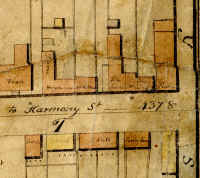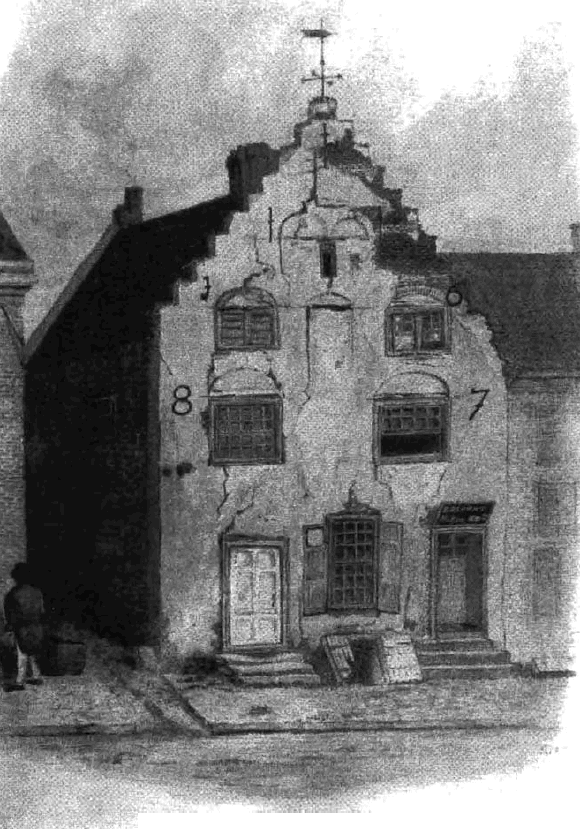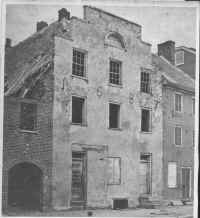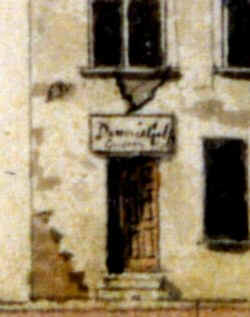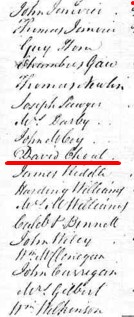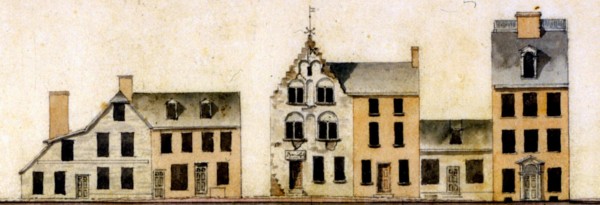
Detail of the Latrobe Survey, 1805 Delaware Public Archives, Dover. Click to enlarge
Mysteries of The Dutch Tile House
The road to the City of Emeralds is paved with yellow brick
[L. Frank Baum The Wonderful Wizard of Oz, ch. 2
(1900)]
I've finally decided my future lies beyond the yellow brick road
[Elton John (1973) ]
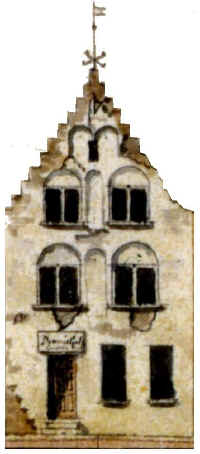
From the Latrobe Survey, 1805 Delaware Public Archives, Dover Click to enlarge |
What's so mysterious about the Tile House?
Everybody knows it was built in
1687 from the Dutch yellow bricks we find around town, and was so sturdily
built it required dynamite to demolish it. Right?
* When was it built? (There was a large '1687' in old paintings
and photos. Were they an
addition between 1805 and 1820?)
Many of these details are discussed in the article
"New Castle's Dutch Tile House of 1687: Fraud or Genuine?" by W. Barksdale
Maynard . This article was originally published in
Delaware History 29 (2001): 141- 168 and is posted
with permission of the Historical Society of Delaware (www.hsd.org). |
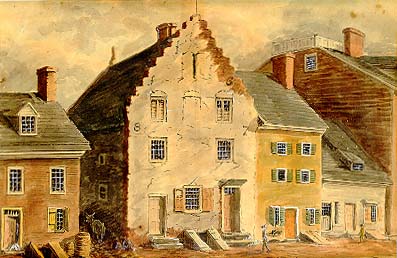 Bird 1822? 1826? Univ. Pennsylvania
Edward Williams Clay, 1822, Courtesy New Castle Historical Society
Click on photograph to enlarge |
Was it build in 1687? What about the numbers in
the wall?
There are opposing view on date the building to 1687 based on the numbers that are seen in drawings and photos from 1822 to 1884. Harper points out that they are not shown in the Latrobe Survey of 1805, and may have been added during a renovation between 1805 and 1820. Maynard suggests that Latrobe may have just not included them. Given the quite small details he included elsewhere -- such as the signs above the door on the Tile House (see below) and Hotel and Delaware signs on the Gunning-Bedfore/Caleb Benett house it seems strange that he would not include the much larger numbers. However, as Maynard points out, it also seems strange that they would be added between 1805 and 1822 "as an antiquarian exercise to an old, somewhat decrepit commercial structure" when interest in "colonial architecture was at its lowest ebb, with even major public buildings being demolished without comment or qualm".
Appearance just before destruction in 1884; Where's the tile? In any case, after the removal of the house's foundation in the 1930's, local workers dumped much of the rubble (including the bricks) into the river and at the site of the current garage at the end of Harmony Street (statement of one of the workers to C. Maltenfort). Original and early use Who lived there? What was it used for? |
